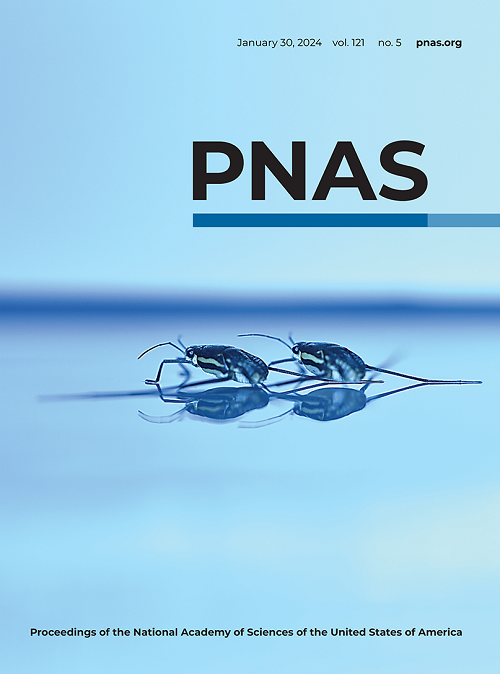核壳型金刚石纳米晶体的工程自旋相干性
IF 9.4
1区 综合性期刊
Q1 MULTIDISCIPLINARY SCIENCES
Proceedings of the National Academy of Sciences of the United States of America
Pub Date : 2025-05-21
DOI:10.1073/pnas.2422542122
引用次数: 0
摘要
荧光金刚石纳米晶体可以承载自旋量子比特传感器,能够以纳米尺度的空间分辨率探测生物系统的物理特性。100纳米以下的金刚石纳米传感器可以很容易地进入完整的细胞甚至生物体。然而,超出当前原理验证实验的应用需要大幅提高灵敏度,这受到表面诱导电荷不稳定性和电子自旋减相的限制。在这项工作中,我们利用工程化的核壳结构实现了量子比特相干时间(t2)的大幅增加,从裸纳米金刚石的1.1到35 μs增加到52到87 μs。我们利用电子顺磁共振结果提出了一个能带弯曲模型,并将二氧化硅封装与去除有害的中隙表面态联系起来,这些中隙表面态对量子比特的自旋特性有负面影响。结合1.9倍的粒子发光,这些进步相当于积分时间减少了两个数量级。在单个粒子水平上探测量子比特动力学进一步揭示,在实验过程中,从具有重新排列其空间配置的自旋的浴到更稀释的静态浴,噪声特性从根本上发生了变化。观察到的结果揭示了控制金刚石纳米晶体荧光和自旋特性的潜在机制,并提供了基于工程核壳结构的有效降噪策略。本文章由计算机程序翻译,如有差异,请以英文原文为准。
Engineering spin coherence in core-shell diamond nanocrystals
Fluorescent diamond nanocrystals can host spin qubit sensors capable of probing the physical properties of biological systems with nanoscale spatial resolution. Sub-100 nm diamond nanosensors can readily be delivered into intact cells and even living organisms. However, applications beyond current proof-of-principle experiments require a substantial increase in sensitivity, which is limited by surface induced charge instability and electron-spin dephasing. In this work, we utilize engineered core-shell structures to achieve a drastic increase in qubit coherence times ( T 2 ) from 1.1 to 35 μs in bare nanodiamonds to upward of 52 to 87 μs. We use electron-paramagnetic-resonance results to present a band bending model and connect silica encapsulation to the removal of deleterious mid-gap surface states that are negatively affecting the qubit’s spin properties. Combined with a 1.9-fold increase in particle luminescence these advances correspond to up to two-order-of-magnitude reduction in integration time. Probing qubit dynamics at a single particle level further reveals that the noise characteristics fundamentally change from a bath with spins that rearrange their spatial configuration during the course of an experiment to a more dilute static bath. The observed results shed light on the underlying mechanisms governing fluorescence and spin properties in diamond nanocrystals and offer an effective noise mitigation strategy based on engineered core-shell structures.
求助全文
通过发布文献求助,成功后即可免费获取论文全文。
去求助
来源期刊
CiteScore
19.00
自引率
0.90%
发文量
3575
审稿时长
2.5 months
期刊介绍:
The Proceedings of the National Academy of Sciences (PNAS), a peer-reviewed journal of the National Academy of Sciences (NAS), serves as an authoritative source for high-impact, original research across the biological, physical, and social sciences. With a global scope, the journal welcomes submissions from researchers worldwide, making it an inclusive platform for advancing scientific knowledge.

 求助内容:
求助内容: 应助结果提醒方式:
应助结果提醒方式:


